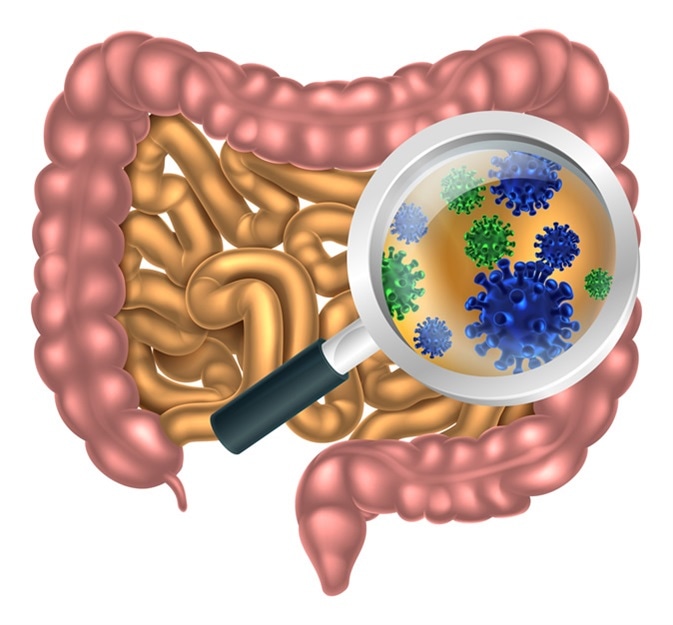For The Latest Medical News, Health News, Research News, COVID-19 News, Pharma News, Glaucoma News, Diabetes News, Herb News, Phytochemical News, Thailand Cannabis News, Cancer News, Doctor News, Thailand Hospital News, Oral Cancer News, Thailand Doctors
Small intestinal bacterial overgrowth (SIBO) is a condition in which colonic microflora grows upward into the small intestine. It is associated with many intestinal and extraintestinal symptoms and signs. For this reason, its diagnosis has created a lot of interest.
Diagnosis is primarily based on the clinical history, supplemented by blood tests including serum vitamin levels, fecal fat tests, X-rays of the small intestine, small intestine biopsies, and cultures of jejunal fluid, as well as breath tests.

At first, direct jejunal aspiration with culture was the method used to diagnose SIBO. The number of bacteria grown, in terms of colony-forming units (CFU) per ml of aspirate, is the observation used, and 105 or 107 colonies depending on the researcher, from the proximal small bowel, was the former gold standard.
The disadvantage of this method is its highly invasive character, involving the need for fluoroscopically guided intubation, which requires time and skill, with sophisticated facilities. Even more, many or even most intestinal bacteria do not grow on routine culture, making this an unproductive exercise. Technical difficulties further reduce the yield of this procedure.
Indirect tests have now been developed to overcome the invasive nature of the jejunal aspirate culture. These are also less costly.
The various breath tests depend on the modification of a simple carbohydrate to a substance, which can be detected and quantified in the breath. These include xylose, lactulose, glucose, or sucrose.
The widespread availability of inexpensive gas chromatography kits meant that hydrogen or methane could be easily and rapidly detected.
The earliest was the bile acid breath test, using bile acids radiolabeled with carbon-13 or carbon-14.
While not very sensitive (30-60%) it was highly specific. The 14C glycocholic acid breath test was the most commonly used, but is not up to these standards.
It may show false-positive results if the terminal ileum has been resected or is abnormal due to disease or other causes, because this affects bile acid uptake.
The radiation hazard also makes this test unsuitable for pediatric and pregnant patients, and in fact for all women in the reproductive age group.
The 14C Xylose breath test reflects the intestinal bacterial metabolism of 14C xylose to 14CO2. Sensitivities reported have ranged from 14 to 95% and specificities between 40 and 94%.
Hydrogen breath tests depend on the fermentation products of carbohydrate metabolism by intestinal bacteria, especially anaerobic colonic bacteria, because this is the only way in which hydrogen is produced in the human body.
It depends on malabsorption leading to sugar reaching the colonic bacteria unabsorbed, or on SIBO where colonic flora is present high enough to gain access to these carbohydrate substrates.
They help to evaluate gut transit as well, by the time taken for hydrogen to appear in breath (which is one-fifth of the produced gas) after the ingestion of the carbohydrate.
Following a 24-hour low-fiber diet and an overnight 12-hour fast the patient exhales to allow measurement of baseline hydrogen values.
The substrate is then ingested orally and sequential samples of breath collected for the next 3-5 hours with the time being recorded. An increase in exhaled hydrogen by more than 10 ppm over the baseline, or appearance of double peaks following lactulose administration.
Simple and inexpensive, these tests have become widely used. Potential pitfalls include false-negatives due to hydrogen sequestration in the gut, the lack of a uniform standard for interpretation of the results in special situations such as altered gastric emptying time, the lack of suitable flora in about 10% of individuals making hydrogen breath tests useless, and the need for special studies in populations such as the very old, the post-gastrectomy and obese patients, and the absence of sufficient data as to the effect of prior antibiotic therapy.
The use of imaging in SIBO helps identify etiologies such as diverticulosis of the small intestine, but not conditions, which involve only mucosal changes. Biopsies are also not useful in such cases.
Many researchers use antibiotics as therapeutic trials to confirm the diagnosis of SIBO. However, without an established protocol as to the appropriate antibiotic, the dosage and duration of treatment, this seems to be up to the clinical judgment of each clinician rather than an evidence-based treatment approach.